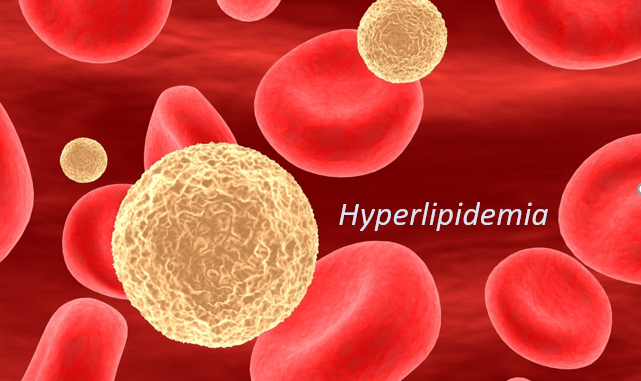
Hyperlipidemia is condition of increased lipid level in body caused due to various reasons like dietary excess, alcoholism, hypothyroidism etc. Several classes of lipoproteins present in our body are:
- Chylomicrons
- Chylomicron remnant
- Very Low-Density Lipoprotein (VLDL)
- Intermediate Density Lipoprotein (IDL)
- Low Density Lipoprotein (LDL)
- High Density Lipoprotein (HDL)
- Lipoprotein a

Among these all, HDL is good lipoprotein whereas all others are bad lipoproteins. The lipoproteins contain a non-polar core of triglycerides (TG) and cholesterol esters surrounded by a polar coat made up of phospholipids, unesterified cholesterol and apoproteins. The lipid in the chylomicrons and VLDL is mostly TG whereas that in LDL is mostly cholesterol.
Hyperlipidemia play important role in pathogenesis of atherosclerosis. Hyperlipidemia can be divided into 5 types;
i)Type I (Familial Hyperchylomicronemia)
It is due to deficiency of lipoprotein lipase or deficiency of normal apolipoprotein. It is not associated with increase in chance of coronary heart failure.
ii) Type IIA (Familial Hypercholesterolemia)
Elevated LDL with normal VLDL levels caused due to synthesis or processing of LDL receptors. Ischemic heart disease is greatly accelerated.
iii) Type IIB (Familial Combined Hyperlipidemia)
It is similar to type IIA except that VLDL is also increased. It is caused by overproduction of VLDL by liver.
iv) Type III (Familial Dysbetalipoproteinemia)
Increased concentration of IDL resulting in increased TG and cholesterol. It is caused due to overproduction or underutilization of IDL.
v) Type IV (Familial Hypertriglyceridemia)
VLDL level are increased with normal level of LDL resulting in normal to elevated cholesterol and highly elevated TG levels, It is caused due to overproduction and decreased removal of VLD.
vi) Type V (Familial Mixed Hypertriglyceridemia)
Serum VLDL and chylomicrons are elevated whereas LDL is normal or decreased resulting in elevated cholesterol or TG level. It occurs most commonly in obese or diabetic persons.